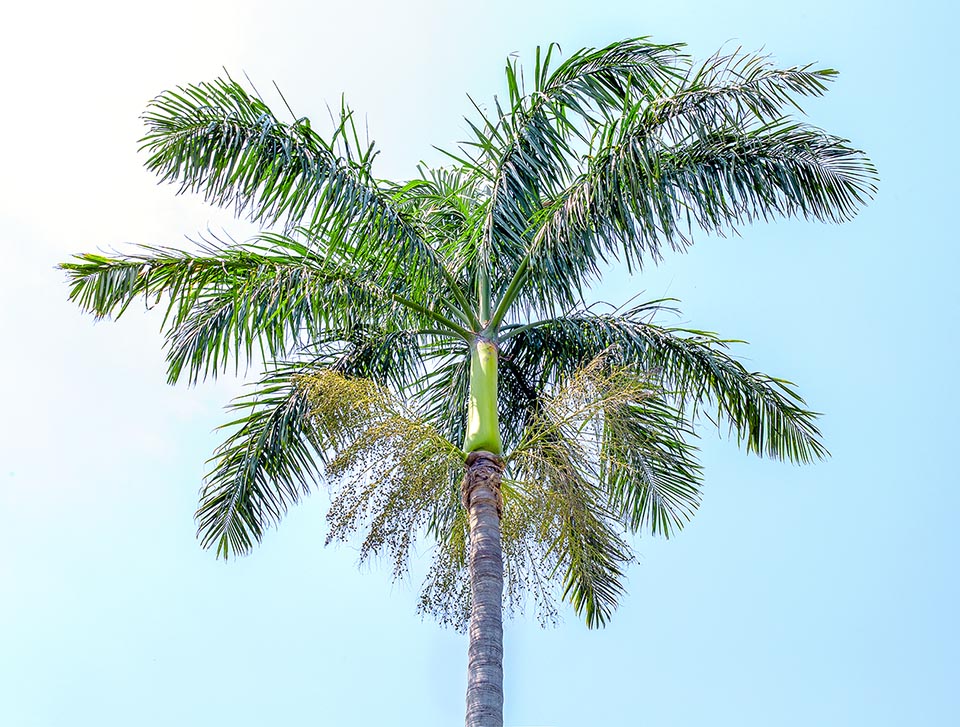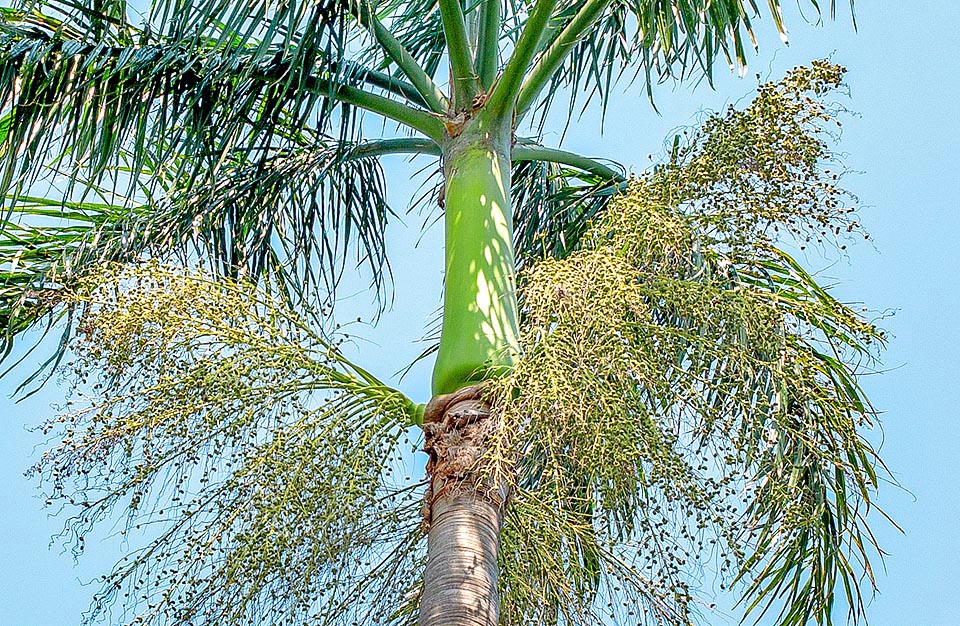Family : Arecaceae

Text © Pietro Puccio

English translation by Mario Beltramini
The species is native to Jamaica where it grows in the south-western part of the island in swampy areas periodically flooded at low altitude.
The genus gets its name from the American army general Roy Stone (18336-1905) who worked as engineer in Puerto Rico; the specific name is the Latin adjective “princeps, cipis” = first, highest.
Common names: marsh cabbage, morass cabbage palm, morass royal palm, swamp royal palm (English).
The Roystonea princeps (Becc.) Burret (1929) is an unarmed monoecious species with solitary stem, erect, up to 20 m tall and 30-40 cm of diameter, at times slightly swollen in the central part, of greyish white color.

In the swampy zones at low altitude of Jamaica, the Roystonea princeps reaches the height of 20 m with a trunk of 30-40 cm of diameter © Giuseppe Mazza
The leaves, on a 30-40 cm long petiole, are pinnate, 3,6-4 m long, with linear leaflets with acuminate apex, in the median part long 70-75 cm and 4,5-6 cm broad, more or less drooping, arranged on the rachis at different angles.
The foliar sheath, smooth and of glossy green grey color, wraps entirely the trunk for a height of 1,5-1,8 m forming a sort of tubular capital (the crownshaft) slightly enlarged at the base.
Inflorescences, on short peduncle, under the leaves (infrafoliar), about 1,5 m long, very ramified, initially enclosed in a bract about 1,8 m long, with unisexual flowers of white colour arranged on the rachillae in triads (one female flower between two male), but in the terminal part where are present only male flowers in couple or solitary. Male flowers with 3 sepals, 3 free petals and 6-12 stamens, female flowers with 3 free sepals, 3 petals merged at the base, 6 staminodes united at the base, unilocular globose gynaeceum and 3 curved stigmas.

The globose to ellipsoidal fruits, 1,2-1,8 cm long and of 0,8-1 cm of diameter, get coloured of blackish purple when ripe. Cultivation possible also in warm temperate zones © Giuseppe Mazza
Globose to ellipsoidal fruits, 1,2-1,8 cm long and of 0,8-1 cm of diameter, of blackish purple color when ripe, containing only one ellipsoidal seed, 1-1,2 cm long an d of 0,6-0,7 cm of diameter.
It reproduces by seed, previously kept in water for 3 days, in draining organic loam maintained humid at the temperature of 26-28 °C, with germination times of 2-3 months.
One of the less cultivated among the Roystonea, but of great ornamental and landscaping effect, as isolated specimen as well as in group or in line on the sides of roads and alleys of the regions with tropical and humid subtropical climate, its cultivation may be tried in the mildest warm temperate regions where temperatures close to 0 °C are exceptional events and of very short duration. It requires full sun or at most a slight shade during the first years and soils rich of organic substance maintained constantly humid, in the climates characterized by a long dry season needs regular watering, especially in the juvenile phase.
Synonyms: Oreodoxa princeps Becc. (1912).
→ For general notions about ARECACEAE please click here.
